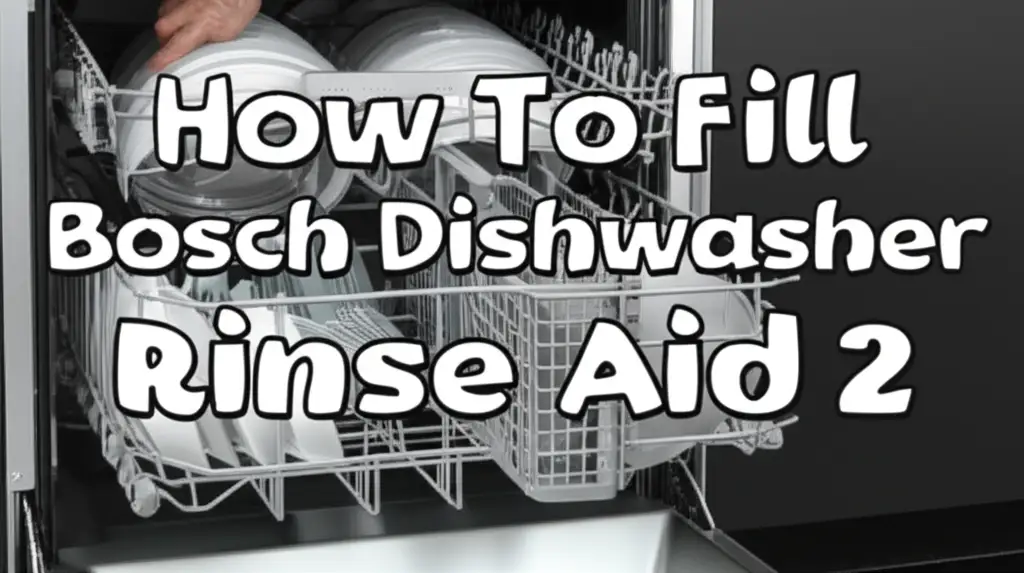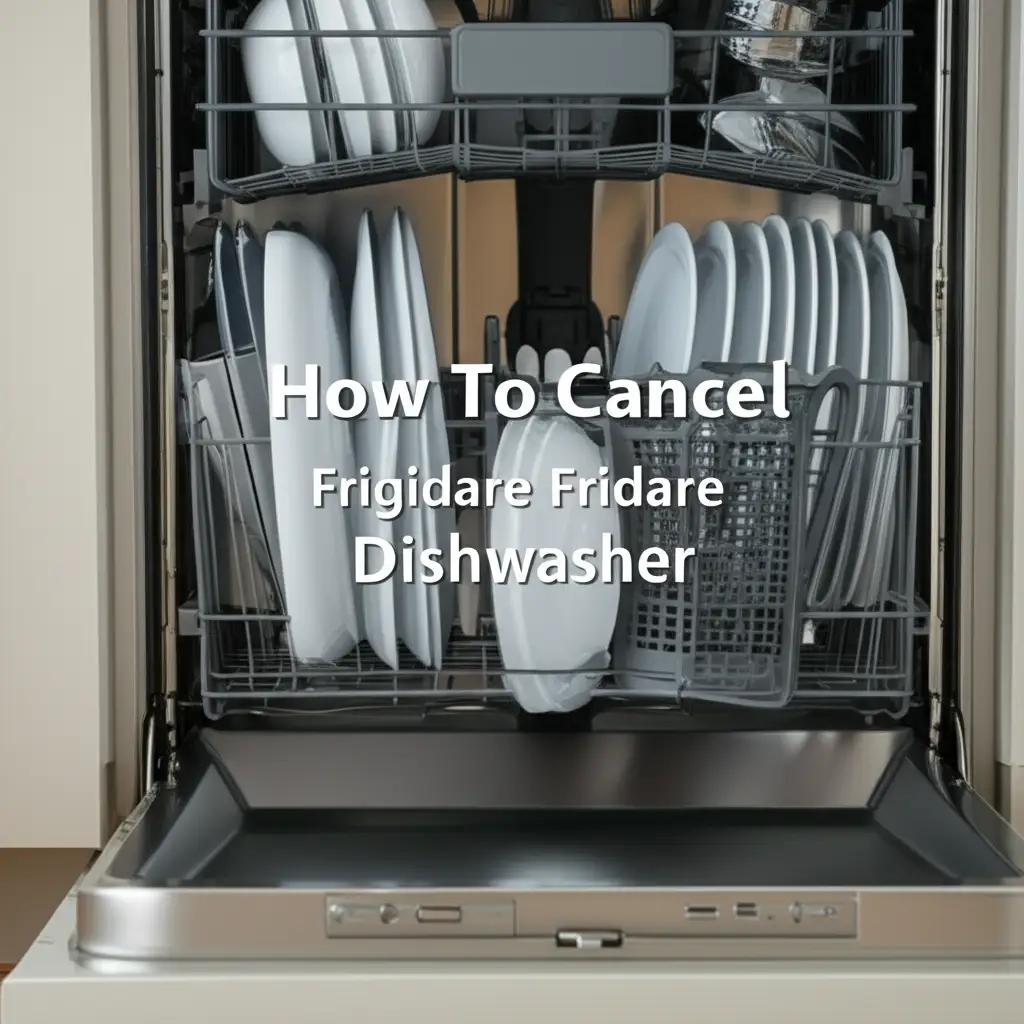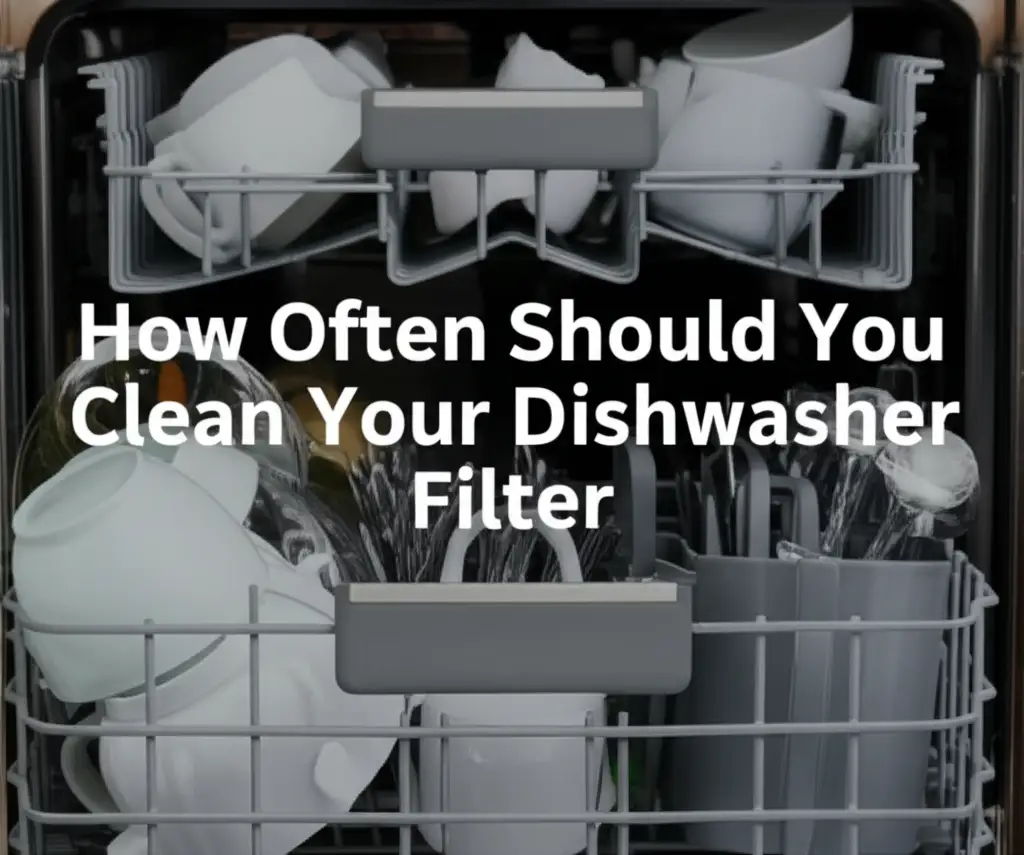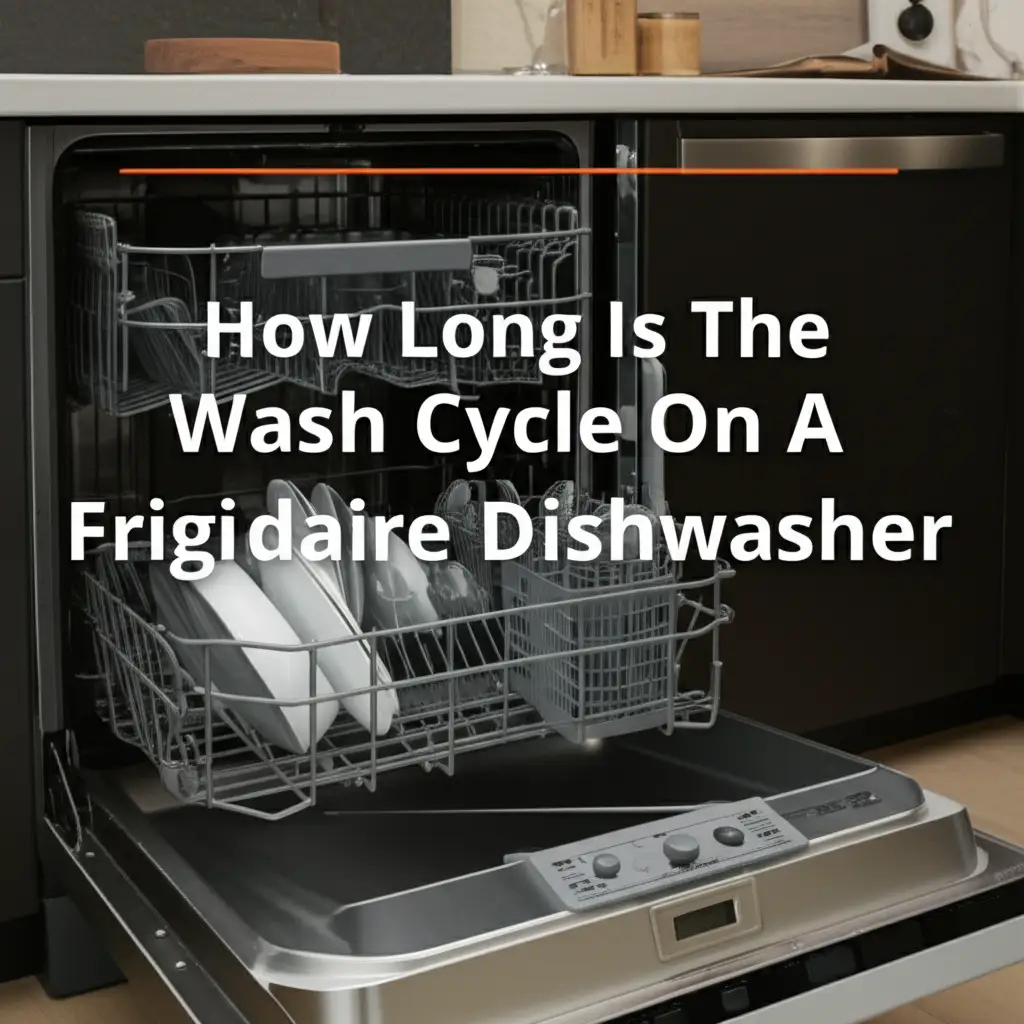· Tessa Winslow · Dishwasher Maintenance · 15 min read
How To Fill Bosch Dishwasher Rinse Aid 2

How to Fill Bosch Dishwasher Rinse Aid Correctly
Do you wonder how to fill Bosch dishwasher rinse aid? Achieving sparkling, spot-free dishes is a goal for every homeowner. Bosch dishwashers are known for their quiet operation and cleaning power. However, even the best dishwasher needs the right helpers. Rinse aid is one of these essential helpers. It ensures your dishes come out dry and without water spots or streaks.
This article guides you through the process of how to fill Bosch dishwasher rinse aid. We cover finding the dispenser and choosing the best product. You will also learn about adjusting the settings for perfect results. We aim to help you understand this simple but important task. Follow our steps to keep your dishes looking their best.
Takeaway
- Locate the rinse aid dispenser on the inner door of your Bosch dishwasher.
- Open the dispenser cap and carefully pour liquid rinse aid until the indicator shows full.
- Wipe away any spills to prevent oversudsing during a wash cycle.
- Adjust the rinse aid dosage setting based on your water hardness for optimal drying and shine.
- Refill rinse aid when the indicator light appears on your dishwasher control panel.
Filling Bosch dishwasher rinse aid involves locating the dispenser on the inner door, opening the cap, and carefully pouring liquid rinse aid up to the max fill line. Always wipe up any spills immediately to avoid excessive sudsing. This simple step ensures spot-free drying and shiny dishes from your Bosch appliance.
Understanding Rinse Aid and Your Bosch Dishwasher
Rinse aid is a crucial part of getting clean dishes. It helps dishes dry faster and without spots. Water spots happen because of minerals in tap water. When water dries on dishes, these minerals remain. Rinse aid changes the surface tension of water. This makes water sheet off dishes instead of forming droplets.
Bosch dishwashers are engineered for performance. They often include advanced drying systems. However, rinse aid still plays a vital role. It works with the dishwasher’s drying cycle. This combination ensures dishes come out perfectly dry. Without rinse aid, even the best Bosch dishwasher may leave streaks. Your dishes might also feel damp after a cycle finishes.
Using the right rinse aid protects your dishwasher too. It helps prevent mineral buildup inside the machine. This buildup can affect the dishwasher’s efficiency over time. Regular use of rinse aid means cleaner dishes and a healthier appliance. It is a small step with big benefits for your kitchen.
Most modern Bosch dishwashers rely on rinse aid for optimal drying. They do not have a traditional heated drying element. Instead, they use condensation drying. This process uses the residual heat from the wash cycle. Rinse aid is essential for this method to work effectively. It allows water to run off glassware and plates smoothly. This prevents water from clinging to surfaces. This leads to better drying results without extra energy use. Always make sure your rinse aid dispenser is full for the best performance.
Locating the Rinse Aid Dispenser on Your Bosch
Finding the rinse aid dispenser on your Bosch dishwasher is simple. You will typically find it on the inside of the dishwasher door. Open the door fully to see the control panel and detergent dispenser. Look near the detergent dispenser. The rinse aid dispenser is usually a smaller compartment next to it.
This compartment has a small cap or cover. The cover often has a symbol of a starburst or a fan. This symbol indicates it is the rinse aid compartment. On some Bosch models, the cap might be clearly labeled “Rinse Aid.” The design ensures it is easy to spot for refills. Familiarize yourself with its location before you start filling.
The exact design of the dispenser might vary slightly by Bosch model. However, its general location remains consistent. It is always on the inner door panel. This placement allows the rinse aid to be released at the correct time during the wash cycle. The dispenser has a spring-loaded or twist-off cap. You will need to open this cap to add the rinse aid.
It is important not to confuse the rinse aid dispenser with the detergent dispenser. The detergent dispenser is larger. It holds the main cleaning agent. The rinse aid dispenser is smaller. It is specifically for the drying agent. Always check the labels or symbols to ensure you are filling the correct compartment. If you are unsure, consult your Bosch dishwasher manual. The manual provides precise diagrams for your specific model. Taking a moment to locate it correctly prevents errors and ensures your dishes get the proper treatment.
Step-by-Step Guide: How to Fill Bosch Dishwasher Rinse Aid
Filling the rinse aid in your Bosch dishwasher is a straightforward process. Follow these steps carefully for the best results.
- Open the Dishwasher Door: Start by opening your Bosch dishwasher door completely. This gives you full access to the inner panel.
- Locate the Dispenser: Find the rinse aid dispenser. It is usually next to the detergent dispenser on the inside of the door. Look for a circular cap with a starburst or fan symbol.
- Open the Dispenser Cap: Twist the cap counter-clockwise to open it. Some models might have a flip-open tab instead. You may hear a click as it opens.
- Pour the Rinse Aid: Carefully pour the liquid rinse aid into the opening. Use a funnel if you find it difficult to pour without spilling. Fill the dispenser until the indicator shows “full.” Most dispensers have a “max” fill line or a clear indicator window that changes color when full. Do not overfill the compartment. Overfilling can cause excessive suds or leakage.
- Wipe Away Spills: If any rinse aid spills onto the dishwasher door or inside the tub, wipe it immediately. Use a damp cloth to clean up any residue. Spilled rinse aid can cause too much foam during the wash cycle. This can affect cleaning performance.
- Close the Dispenser Cap: Firmly close the dispenser cap. Twist it clockwise until it clicks into place. If it is a flip-open type, press it down until it snaps shut. Make sure the cap is secure to prevent leaks during the wash cycle.
- Check the Indicator: After closing, verify the rinse aid level indicator on your dishwasher’s control panel. It should no longer show a low level. This confirms the dispenser is full and ready for the next wash.
Properly filling the rinse aid ensures your Bosch dishwasher continues to deliver spotless, dry dishes. If you are also curious about other dishwasher brands, you can learn how to fill rinse aid in a Kenmore dishwasher for comparison, as the process is often similar but with slight variations.
Choosing the Right Rinse Aid for Your Bosch Dishwasher
Choosing the correct rinse aid makes a real difference. Not all rinse aids are the same. Liquid rinse aid is the most common type. It is designed to work well with automatic dispensers. Bosch dishwashers are built to use this liquid form. Avoid using anything else that is not specifically labeled as dishwasher rinse aid.
Many brands offer high-quality rinse aid. Popular choices include Finish Jet-Dry, Cascade Platinum Rinse Aid, and store-brand options. Look for products that state they are for “spotless drying” or “shine.” These products are formulated to break water tension effectively. They help prevent water spots and streaks on your dishes.
Consider the water hardness in your area when choosing a rinse aid. If you have very hard water, you might benefit from a rinse aid designed for hard water. These often contain stronger agents to combat mineral deposits. Using a quality rinse aid extends the life of your dishes. It keeps them looking new.
You might wonder about alternatives. Some people consider using vinegar instead of rinse aid. While vinegar has acidic properties that can reduce spots, it is not a direct replacement for commercial rinse aid. Vinegar does not offer the same sheeting action. It also might not be recommended by Bosch for long-term use. For optimal performance and warranty considerations, using a dedicated rinse aid is best. To learn more about this, you can read our detailed guide on can I use vinegar instead of rinse aid in dishwasher. For now, stick with a commercial liquid rinse aid for your Bosch.
Adjusting the Rinse Aid Dispenser Setting for Optimal Results
After filling the rinse aid, you might need to adjust its dispensing level. This setting controls how much rinse aid your dishwasher uses per cycle. Adjusting this level is key to achieving truly spotless dishes. The ideal setting depends mainly on your water hardness. Hard water requires more rinse aid, while soft water needs less.
To adjust the setting, consult your Bosch dishwasher’s user manual. Most Bosch models have a digital display or a series of buttons for this. You typically enter a program mode or hold a specific button. Then you can cycle through numbers or bars. A higher number means more rinse aid. A lower number means less. The default setting is usually suitable for average water conditions.
Look for signs that your setting might be off. If your dishes come out with water spots or feel wet, you might need to increase the rinse aid dosage. This means the setting is too low for your water. If you see streaks, a bluish film on glassware, or excessive foam, the setting might be too high. This indicates too much rinse aid is being dispensed. Adjust the setting one level at a time. Then run a few wash cycles to see the results.
Finding the right balance ensures efficient rinse aid use. It also guarantees perfect dish dryness and shine. Do not be afraid to experiment a little. Small adjustments can lead to significant improvements in your dishwashing results. Remember, the goal is clear, dry, and sparkling dishes without wasting rinse aid. Proper adjustment saves rinse aid and gives the best performance.
Common Issues and Troubleshooting with Bosch Rinse Aid
Sometimes, you might encounter issues even after filling the rinse aid correctly. Troubleshooting these problems helps maintain your dishwasher’s performance. One common issue is overfilling. If you pour too much rinse aid, it can spill into the tub. This leads to excessive suds during the wash cycle. Too many suds can affect cleaning and even leak from the dishwasher door. Always wipe up spills immediately after filling.
Another problem can be dishes that are still spotty or wet. This might mean the rinse aid level is too low. Check the dispenser to ensure it is full. It could also mean the rinse aid setting is too low for your water hardness. Adjust the setting as discussed earlier. Sometimes, an old or expired rinse aid can be less effective. Using a fresh product can solve this. Also, ensure your dishwasher detergent is appropriate for your Bosch. The right detergent works hand-in-hand with rinse aid for the best results. You can find more information about what detergent is recommended for Bosch dishwasher.
If the rinse aid dispenser itself seems faulty, it might not be releasing the rinse aid properly. This is rare but can happen. Check for blockages around the dispenser opening. Ensure the cap closes securely. A loose cap can prevent proper dispensing or cause leakage. If the dispenser is visibly damaged, you might need to contact Bosch service for repair.
Lastly, make sure your dishwasher is clean. A dirty filter or spray arms can impact overall cleaning and drying. Even with enough rinse aid, dirt can hinder performance. Regularly cleaning your dishwasher helps. You can also explore how to run a clean cycle on a Bosch dishwasher to ensure your appliance is always at its best. Addressing these common issues helps keep your Bosch dishwasher running efficiently.
When to Refill and How to Monitor Your Bosch Rinse Aid Level
Knowing when to refill rinse aid is simple with a Bosch dishwasher. Most Bosch models have a low rinse aid indicator light. This light typically appears on the control panel. It usually looks like a small starburst or sun icon. When this light illuminates, it means your rinse aid level is low. This is your cue to refill the dispenser before the next wash cycle.
The frequency of refilling depends on how often you use your dishwasher. It also depends on the rinse aid dosage setting you have chosen. If you wash dishes daily and use a higher setting, you will need to refill more often. For less frequent use or lower settings, refills will be less common. On average, a full dispenser can last anywhere from several weeks to a few months.
Some Bosch dishwashers might have a clear window on the dispenser cap. This window allows you to visually check the rinse aid level. You can see if the compartment is nearly empty or still full. This is a good way to check the level even before the indicator light comes on. Make it a habit to glance at this window every few wash cycles.
Consistent monitoring ensures you never run out of rinse aid. Running a cycle without rinse aid can lead to spotty or wet dishes. This undoes the benefits of using rinse aid. Keep a bottle of your preferred rinse aid on hand. Refilling it promptly when the indicator light appears ensures continuous spotless performance. This simple routine keeps your dishes looking their best every time.
Beyond Filling: Maximizing Your Bosch Dishwasher’s Cleaning Power
Filling rinse aid is a key step, but it is one part of a larger system. To truly maximize your Bosch dishwasher’s cleaning and drying power, consider other factors. The type and amount of detergent you use are very important. Use high-quality dishwasher detergent, preferably one recommended for Bosch appliances. Correct detergent dosage prevents residue and ensures effective cleaning. Too little detergent won’t clean well. Too much can cause excess suds.
Proper loading of dishes also makes a big difference. Do not overcrowd the racks. Allow water and spray to reach all surfaces. Face dirtier sides towards the spray arms. Keep large items from blocking the dispenser. Proper loading ensures thorough washing and effective rinsing. This allows the rinse aid to work on all dish surfaces.
Regular maintenance of your dishwasher is critical. The filter system, especially in Bosch dishwashers, needs routine cleaning. Food particles and grease can build up in the filter. A clogged filter impacts water circulation and cleaning performance. This can lead to dirty dishes or inefficient drying. Cleaning the filter regularly ensures optimal water flow and hygiene. You should learn how often should you clean your dishwasher filter for best results.
Finally, consider using a dishwasher cleaner periodically. These cleaners help remove grease, lime scale, and odor-causing buildup from inside the machine. A clean dishwasher performs better. It smells fresh and ensures your dishes get the best treatment. Combined with proper rinse aid use, these practices ensure your Bosch dishwasher delivers sparkling results every time.
FAQ Section
1. How often should I refill the Bosch dishwasher rinse aid? You should refill the Bosch dishwasher rinse aid when the indicator light on your control panel illuminates. This light usually looks like a starburst or sun. The exact frequency depends on how often you run your dishwasher and your chosen rinse aid dosage setting. A full dispenser can last from a few weeks to a couple of months.
2. Can I use vinegar as a substitute for rinse aid in my Bosch dishwasher? While some people use vinegar for reducing water spots, it is not a direct substitute for commercial rinse aid. Vinegar does not provide the same sheeting action. Bosch recommends using a dedicated liquid rinse aid for optimal drying performance and to maintain your appliance’s warranty. For more on this, you can refer to our article on using vinegar instead of rinse aid.
3. What happens if I overfill the rinse aid dispenser in my Bosch dishwasher? Overfilling the rinse aid dispenser can lead to excessive suds during the wash cycle. This can affect cleaning performance and may even cause foam to leak from the dishwasher door. Always fill only to the “max” line and promptly wipe up any spills on the dishwasher door or tub.
4. My Bosch dishwasher dishes are still spotty after adding rinse aid. What should I do? If dishes are still spotty, first check if the rinse aid dispenser is full. Then, adjust the rinse aid dosage setting to a higher level. This setting controls how much rinse aid is dispensed. Hard water often requires a higher setting. Also, ensure you are using a good quality, fresh rinse aid.
5. How do I know the correct rinse aid setting for my Bosch dishwasher? The correct rinse aid setting depends on your water hardness. Start with the default setting. If dishes are spotty, increase the setting. If you see streaks or a blue film, decrease it. Consult your Bosch user manual for specific instructions on how to adjust this setting on your model.
6. Does rinse aid contribute to the cleaning cycle or just drying? Rinse aid primarily contributes to the drying process and preventing water spots. It does not actively clean dishes. Its function is to reduce water surface tension, allowing water to sheet off dishes easily. This results in quicker drying and a streak-free shine. Detergent is responsible for the actual cleaning.
Conclusion
Learning how to fill Bosch dishwasher rinse aid correctly is an easy step. It provides a big payoff for your kitchen. This simple task ensures your dishes come out sparkling clean. You will see no more frustrating water spots or streaks. We have covered locating the dispenser and choosing the right product. You now also know how to adjust settings for perfect results.
Regularly filling your rinse aid compartment makes a noticeable difference. It enhances your Bosch dishwasher’s performance. It also contributes to the longevity of your dishware. Make this a regular part of your dishwasher maintenance routine. Your dishes will thank you for it. Enjoy the shine and simplicity of a well-maintained Bosch dishwasher. If you have any further questions, always refer to your specific Bosch dishwasher manual.
- Bosch dishwasher rinse aid
- dishwasher maintenance
- rinse aid dispenser
- spotless dishes
- Bosch appliance care
- hard water solution
- dish drying





